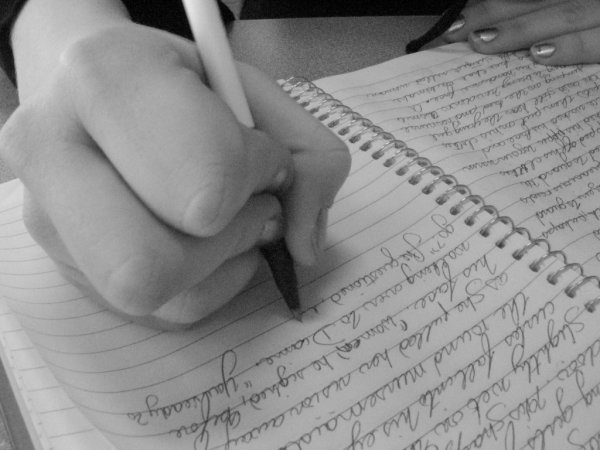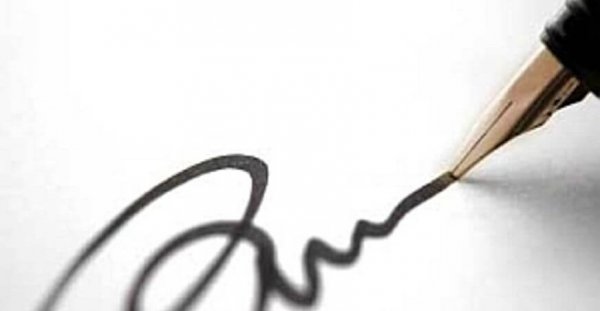Graphology: What Your Handwriting Says About You

Graphology is defined as the technique used to study psychological characteristics of people by means of the forms and lines of their handwriting. Handwriting extracts and individual signatures are randomly analyzed. This can provide information to experts about personality traits or their emotional state at the moment it was written. It is also used to authenticate the authorship of a piece of writing.
We all have a distinct form of writing. Our letters are distinguishable from everyone else’s. Genuine characteristics exist. It is a sort of fingerprint, since it is nearly impossible for two individuals to naturally have the exact same characteristics.
Even if we want to purposefully change it, we will find it very difficult to hide the lines that come naturally to us. This makes graphology a very useful tool in some legal cases to determine the authorship of different crimes. Also, handwriting gives off certain personality traits that can be assessed by experts.

Characteristics to Observe
Graphology focuses on 8 traits that provide diverse information:
- Size: self-image and self-esteem
- Slant of the letters: emotional health, initiative, capacity to reflect on matters and the tendency to use intuition or logic.
- Form: cultural level, intellectual level, aesthetic sense of a person.
- Pressure: vitality and health
- Speed: mental agility, IQ
- Direction of the lines: emotional state
- Linked or separate letters: communication, emotional health, way of relating to others
- Dot’s over the I’s: attention and precision
Thanks to such a detailed analysis of handwriting characteristics, graphologists are capable of developing a profile. Furthermore, they take into account other aspects such as the use of capitals, margins and signature.
Personality Traits Via Handwriting
The analysis of personality traits is based on projective techniques that presume that handwriting reveals unconscious aspects of our behavior. Keeping in mind the model of the 5 big personality traits, different types of handwriting can point to one trait or another.
- Being open to new experiences (Factor O): this trait indicates creativity and flexibility. Disorganized and disproportionate handwriting, extreme pressure, fast and increasing can all point to this trait.
- Responsibility (Factor C): indicates a high level of compromise, someone disciplined, punctual and thoughtful. The handwriting that points to this trait is clear, proportionate, organized and with medium-small sized letters.
- Extraversion/Introversion (Factor E): people with a high level of extraversion are sociable, loquacious and assertive. The handwriting that characterizes this trait is clear, big, increasing and linked. On the contrary, the handwriting of introverted people tends to be focused, small, simple typography, slow and with light pressure.
- Kindness (Factor A): a respectful person, tolerant and calm. The handwriting that is common in this trait is clear, legible, organized, big, with medium pressure and slowly increasing.
- Emotional stability (Factor N): deals with problems calmly and resolutely. The handwriting that could indicate emotional stability is organized, concise, tight, angular, slow, high pressure, straight and with cohesive lapses.
But, we must keep in mind that even though there are guidelines to carry out this analysis, only an expert can make conclusive observations.

Signatures and Initials in Graphology
A signature is personal and inimitable. It contains traits that are very difficult to plagiarize completely. Our signature is our seal of identity and, according to the experts, it can also provide a lot of information about our personality. The fact that we do not one hundred percent consciously choose our signature may contribute to the fact that it has certain elements that tell about the way we are.
One of the most important characteristics when analyzing a signature is whether the name is legible or not. If it can be read with complete clarity this can indicate that the person is someone who has clear objectives, is responsible, has high self-esteem and is balanced. If the signature is difficult to read this could indicate that the person is anxious, impatient and evades responsibility.

Signatures that cannot be deciphered at all indicate that the person has difficulties accepting authority and are confused about their actions. It is also significant how quickly they sign. Doing so quickly can represent the personality of someone who doesn’t like to wait, is impatient, who likes to finish things quickly. A slower handwriting would be more characteristic with someone who is thoughtful.
Different Applications of Graphology
This discipline can be useful in many different professional fields. Within the field of psychology it is a tool, which along with others, can help develop the psychological profile of a patient. In medicine, it can be used for early detection of neurological pathologies, such as Alzheimer’s.
It can also be useful in the education field. Learning disorders, such as dyslexia, can be observed by means of handwriting analysis. In the judicial field, it can be of great use in analyzing suicide notes, to determine who committed a crime or to observe any violent or suspicious traits.
Graphology is used more and more. Judges demand more expert reports to uncover personality traits or aggressive and violent tendencies.
Graphology is defined as the technique used to study psychological characteristics of people by means of the forms and lines of their handwriting. Handwriting extracts and individual signatures are randomly analyzed. This can provide information to experts about personality traits or their emotional state at the moment it was written. It is also used to authenticate the authorship of a piece of writing.
We all have a distinct form of writing. Our letters are distinguishable from everyone else’s. Genuine characteristics exist. It is a sort of fingerprint, since it is nearly impossible for two individuals to naturally have the exact same characteristics.
Even if we want to purposefully change it, we will find it very difficult to hide the lines that come naturally to us. This makes graphology a very useful tool in some legal cases to determine the authorship of different crimes. Also, handwriting gives off certain personality traits that can be assessed by experts.

Characteristics to Observe
Graphology focuses on 8 traits that provide diverse information:
- Size: self-image and self-esteem
- Slant of the letters: emotional health, initiative, capacity to reflect on matters and the tendency to use intuition or logic.
- Form: cultural level, intellectual level, aesthetic sense of a person.
- Pressure: vitality and health
- Speed: mental agility, IQ
- Direction of the lines: emotional state
- Linked or separate letters: communication, emotional health, way of relating to others
- Dot’s over the I’s: attention and precision
Thanks to such a detailed analysis of handwriting characteristics, graphologists are capable of developing a profile. Furthermore, they take into account other aspects such as the use of capitals, margins and signature.
Personality Traits Via Handwriting
The analysis of personality traits is based on projective techniques that presume that handwriting reveals unconscious aspects of our behavior. Keeping in mind the model of the 5 big personality traits, different types of handwriting can point to one trait or another.
- Being open to new experiences (Factor O): this trait indicates creativity and flexibility. Disorganized and disproportionate handwriting, extreme pressure, fast and increasing can all point to this trait.
- Responsibility (Factor C): indicates a high level of compromise, someone disciplined, punctual and thoughtful. The handwriting that points to this trait is clear, proportionate, organized and with medium-small sized letters.
- Extraversion/Introversion (Factor E): people with a high level of extraversion are sociable, loquacious and assertive. The handwriting that characterizes this trait is clear, big, increasing and linked. On the contrary, the handwriting of introverted people tends to be focused, small, simple typography, slow and with light pressure.
- Kindness (Factor A): a respectful person, tolerant and calm. The handwriting that is common in this trait is clear, legible, organized, big, with medium pressure and slowly increasing.
- Emotional stability (Factor N): deals with problems calmly and resolutely. The handwriting that could indicate emotional stability is organized, concise, tight, angular, slow, high pressure, straight and with cohesive lapses.
But, we must keep in mind that even though there are guidelines to carry out this analysis, only an expert can make conclusive observations.

Signatures and Initials in Graphology
A signature is personal and inimitable. It contains traits that are very difficult to plagiarize completely. Our signature is our seal of identity and, according to the experts, it can also provide a lot of information about our personality. The fact that we do not one hundred percent consciously choose our signature may contribute to the fact that it has certain elements that tell about the way we are.
One of the most important characteristics when analyzing a signature is whether the name is legible or not. If it can be read with complete clarity this can indicate that the person is someone who has clear objectives, is responsible, has high self-esteem and is balanced. If the signature is difficult to read this could indicate that the person is anxious, impatient and evades responsibility.

Signatures that cannot be deciphered at all indicate that the person has difficulties accepting authority and are confused about their actions. It is also significant how quickly they sign. Doing so quickly can represent the personality of someone who doesn’t like to wait, is impatient, who likes to finish things quickly. A slower handwriting would be more characteristic with someone who is thoughtful.
Different Applications of Graphology
This discipline can be useful in many different professional fields. Within the field of psychology it is a tool, which along with others, can help develop the psychological profile of a patient. In medicine, it can be used for early detection of neurological pathologies, such as Alzheimer’s.
It can also be useful in the education field. Learning disorders, such as dyslexia, can be observed by means of handwriting analysis. In the judicial field, it can be of great use in analyzing suicide notes, to determine who committed a crime or to observe any violent or suspicious traits.
Graphology is used more and more. Judges demand more expert reports to uncover personality traits or aggressive and violent tendencies.
This text is provided for informational purposes only and does not replace consultation with a professional. If in doubt, consult your specialist.







